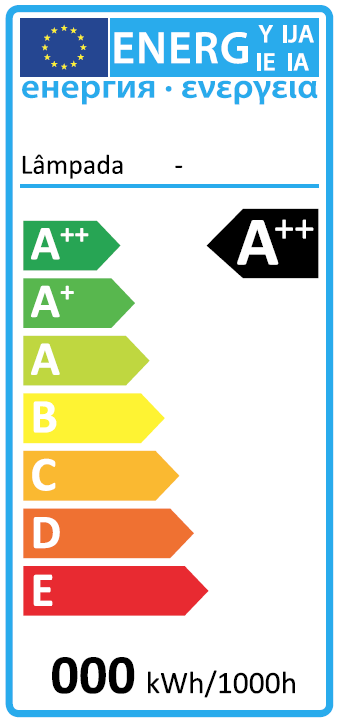The importance of the Energy Label
The energy label is a tool to support consumer decision-making when purchasing new energy-consuming or energy-related products, which helps in choosing energy efficient products.
The availability of accurate and comparable information regarding the energy consumption of energy-consuming products should influence consumer decision-making, motivating them to choose products that consume less energy and thus involve less financial effort in their use.
The energy label is valid throughout the European Union, without the need for translation of the label into any language. The label is increasingly based on pictograms and energy consumption values that allow quantifying energy performance and identifying the type of product to which the label refers.
Class A+++|Class D|Class A++|Class C|Class A+|Class B|Class A
WHAT PRODUCTS ARE YOU IN?
- Energy consuming products (for example residential equipment) and products that do not use energy directly influence energy consumption (for example, hot water reservoir);
- Products with high market penetration, minimum of 200,000 products / year (by product category);
- Products with high potential to reduce energy consumption and environmental impact.
HOW TO FIND IT?
The energy label must always be available when consulting the market so that, in addition to the price and the other characteristics of the product, the energy efficiency of the product is considered as one of the decision factors. The energy label, or at least, the indication of the energy class of the product must be present whenever the product is presented, either in the physical store, an online store or in promotional leaflets.
The energy label must be available in its colored version, to highlight the color scale associated with the energy class.
In the physical store, each product must present the complete energy label so that it is immediately visible to the customer who consults the product. In the case of products sold in packaging, the packaging must have the label (printed directly on the packaging or glued to it). This is the case for lamps, whose energy class indication must be attached to the sales price, but the complete label must be printed on the packaging.
In the online store, the energy class must be indicated next to the product characteristics sheet and the energy label must be available for consultation via a link that allows viewing the complete label, as well as the product sheet with the other product characteristics that matter in the context. energy efficiency.
THE ENERGY LABEL SCALE
The energy efficiency scale of products typically has seven classes, between A and G.
However, whenever an energy label is assigned to a new product, the label is revised at various times. At the initial moment the scale goes from A to G and, in a second moment, after the energy label of this product has been in force for some time, typically two years, there is a rescheduling of the classes to motivate manufacturers to develop more efficient solutions eliminating the classes between D and G and introducing new classes at the top of the classification, A +, A ++ and A +++.
HOW TO READ THE ENERGY LABEL
The energy label was designed to be unique in the European Economic Area, using a neutral language using pictograms instead of text. This means that a product sold in Portugal must have the same energy label as the same product sold in any Member State in Europe.

The energy label has elements that are common to all categories of labeled products:
- Supplier name or brand and model identification;
- Energy class;
- Scale of energy efficiency through colored arrows that distinguish the most efficient products from the least efficient by means of the color and letter associated with their performance;
- Annual energy consumption in kWh;
- Pictograms that show some of the characteristics of the labeled products.
Despite these generic characteristics, the energy efficiency scale and / or pictograms may vary depending on the product category.
For more information on energy label, see the European Label – EU Regulated Products page.



 Simulador Simples
Simulador Simples Simulador Avançado
Simulador Avançado